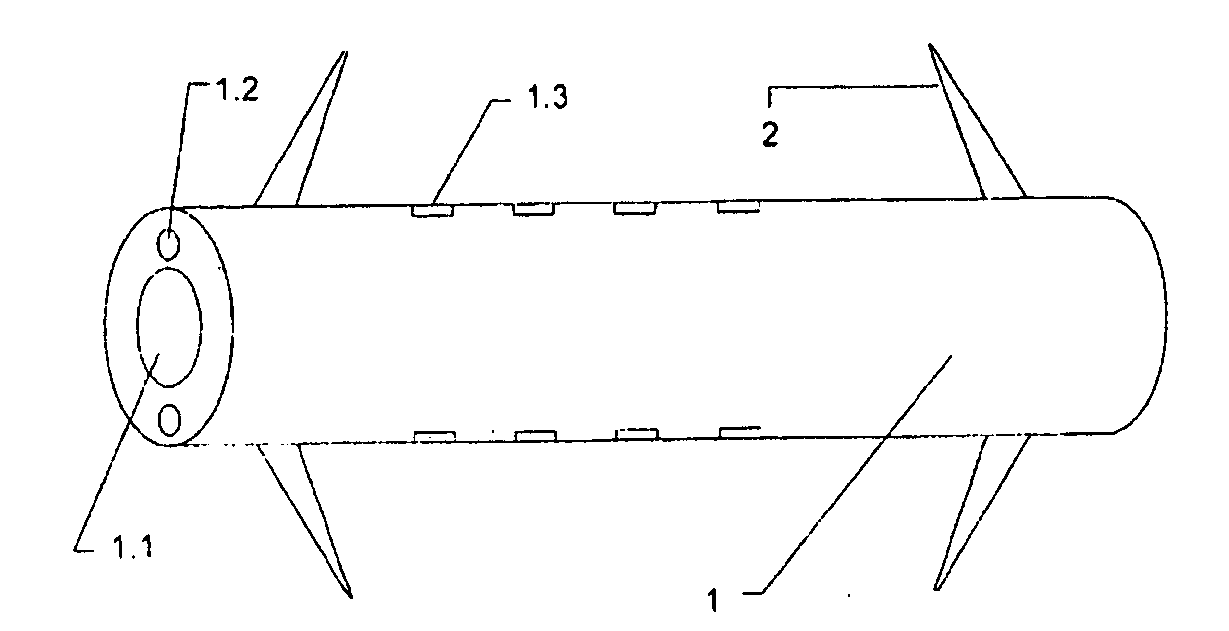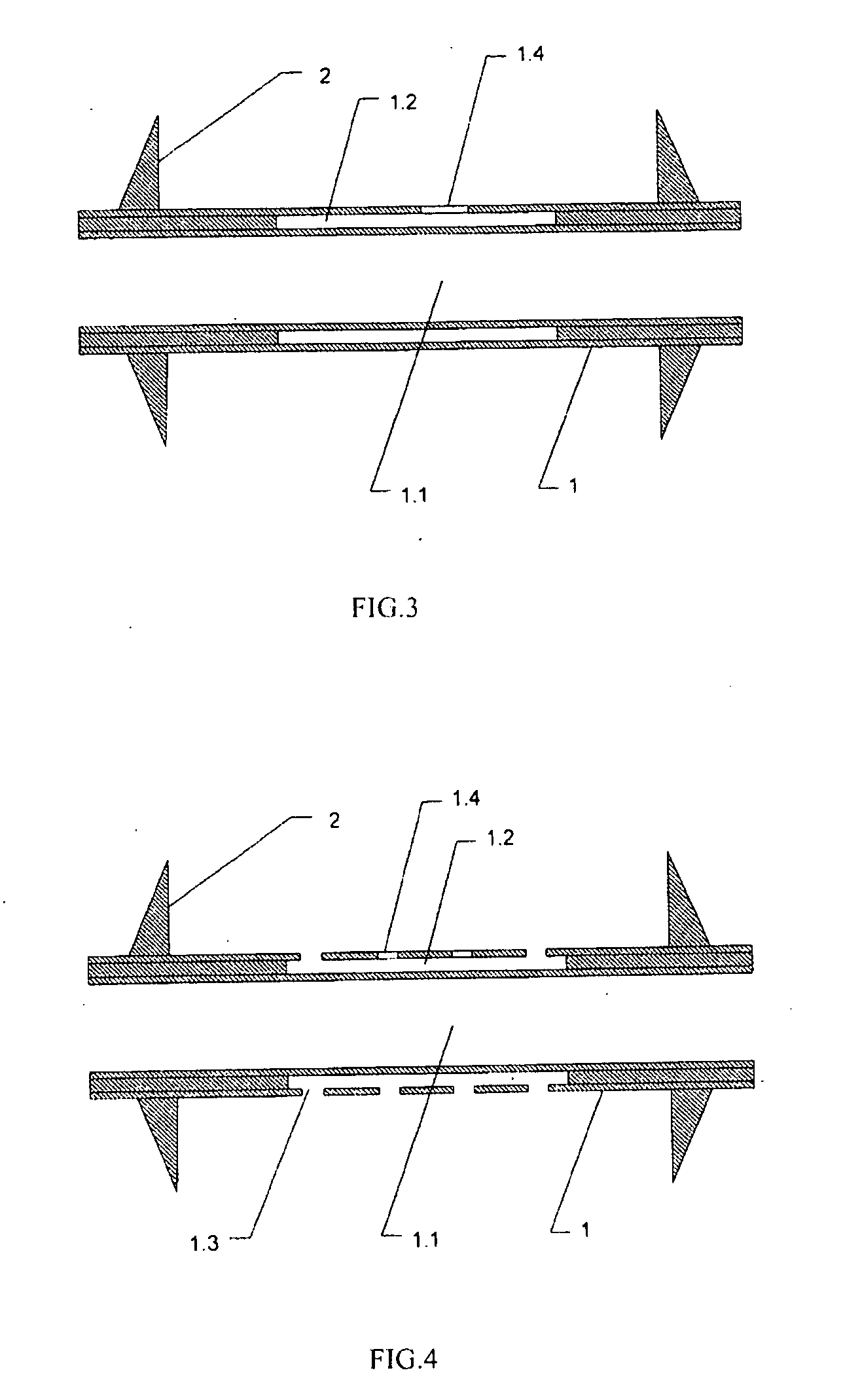Duct stent for carrying miniature radioactive particle sources
a radioactive particle and duct stent technology, applied in the field of duct stents for carrying miniature radioactive particle sources, can solve the problems of low cure rate, poor prognosis, high lethal risk, etc., and achieve the effects of simple manufacturing process, increased convenience of placement operation, and reduced risk of death
- Summary
- Abstract
- Description
- Claims
- Application Information
AI Technical Summary
Benefits of technology
Problems solved by technology
Method used
Image
Examples
embodiment 1
A Pancreatic Duct Stent for Carrying Miniature Radioactive Particle Sources
[0029]The length of the duct stent is 54.4 mm, and the outer diameter thereof is 3.2 mm. The diameter of the drainage cavity is 1.8 mm. One of the particle passage is provided in the tube wall, and the inner diameter thereof is 0.8 mm. Three of the irradiation windows are formed on the outer side wall of the particle passage, wherein the length, the width and the height thereof are 4.4×0.7×0.2 mm, respectively. The pitch between centers of adjacent irradiation windows is 10.0 mm. The distance from each of the two outermost irradiation windows to each of the two ends of the duct stent is 15 mm. The length of each of the two barbs is 7 mm, wherein the length from the root of the barbs to the distal end of the duct stent is 5 mm. The length of the miniature radioactive particle sources is 4.5 mm, and the diameter thereof is 0.8 mm. The activity of a single particle is 0.5 mCi. The pancreatic duct stent which is ...
embodiment 2
A Bile Duct Stent for Carrying Miniature Radioactive Particle Sources
[0030]The length of the duct stent is 69.4 mm, and the outer diameter thereof is 3.6 mm. The diameter of the drainage cavity is 1.5 mm. Two of the particle passages are provided in the tube wall and opposite to each other, and the inner diameter thereof is 0.8 mm. Six of the irradiation windows are formed on the outer side wall of each of the particle passages, wherein the length, the width and the height are 4.4×0.7×0.2 mm, respectively. The pitch between centers of adjacent irradiation windows is 5.0 mm. The distance from the frontmost window to the front end of the duct stent is 25 mm, while the distance from the rearmost window to the rear end of the duct stent is 15 mm. The length of each of the two barbs is 7 mm, wherein the length from the root of the barbs to the distal end of the duct stent is 5 mm. The length of the miniature radioactive particle sources is 4.5 mm, and the diameter thereof is 0.8 mm. The ...
embodiment 3
[0032]As shown in FIG. 3, the duct stent is made of low-shielding material, such as polyethylene without providing the irradiation window 1.3. A wide irradiation range can be carried out, while the irradiation effect is not affected, so as to be suitably applied to various tumors. Alternatively, after providing the irradiation window 1.3, the low-shielding material 1.4 is used to cover or fill the irradiation window, in order to prevent the radioactive sources from falling out.
PUM
 Login to View More
Login to View More Abstract
Description
Claims
Application Information
 Login to View More
Login to View More - R&D
- Intellectual Property
- Life Sciences
- Materials
- Tech Scout
- Unparalleled Data Quality
- Higher Quality Content
- 60% Fewer Hallucinations
Browse by: Latest US Patents, China's latest patents, Technical Efficacy Thesaurus, Application Domain, Technology Topic, Popular Technical Reports.
© 2025 PatSnap. All rights reserved.Legal|Privacy policy|Modern Slavery Act Transparency Statement|Sitemap|About US| Contact US: help@patsnap.com



